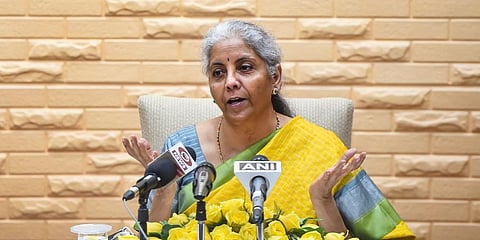

We are barely two months into the financial year, but it appears that the government’s budgetary math is beginning to buckle. Multiple factors are exerting pressure on the Centre’s finances, including the recent excise duty cuts on petrol and diesel sacrificing Rs 1 lakh crore revenue, lower dividend transfer from the RBI, less-than-desirable LIC IPO proceeds, and the calling-off of BPCL privatisation—this is a setback for the disinvestment target, which itself was cut in half over the last year. As if this isn’t enough, the need for additional spending such as fertiliser subsidy of Rs 1.1 lakh crore and others owing to the ongoing Russia-Ukraine conflict seems to have the knife at the treasury’s throat.
Starkly, the situation wasn’t so different just a year ago, but a bumper tax haul lent a helping hand and despite higher expenditure, fiscal deficit is unlikely to have exceeded the budgeted 6.9% of the GDP target for FY22. Another factor that helped was the higher-than-budgeted nominal GDP. While the Centre originally pegged a growth of 17.6%, the second advance estimates show nominal growth at 19.4% in FY22.
For the current financial year, the gross fiscal deficit is pegged at 6.4% of GDP, a reduction of 50 bps over FY22. But again, this estimate is based on a 11.1% nominal GDP growth over the first advance estimates for FY22. It means even a modest 11.1% growth on the second revised estimate offers extra fiscal space straightaway. That said, it is dicey and the deficit math could swing either way. Barclays estimates an incremental fiscal shortfall of Rs 4 lakh crore than what is budgeted for FY23, while ICRA believes that tax revenue may exceed the budget estimate by at least Rs 1.3 lakh crore higher this fiscal, notwithstanding the excise duty cuts.
For now though, government officials have dismissed options of either capex cuts or higher borrowing, perhaps pinning hopes on higher tax and non-tax receipts. But if global headwinds continue and inflationary pressures persist, it’s essential for both wings—expenditure cuts and higher borrowings—to flap together.